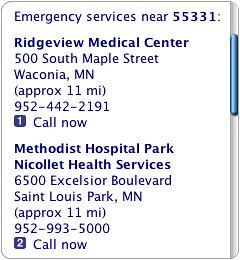In an earlier post, I did a review of Malcolm Gladwell’s The Tipping Point, about social epidemics and how they spread. If you’re looking for provocative thinking that will challenge how you view reality, particularly in the social sciences, you could do a lot worse than reading Gladwell, either on his blog or in one of his books.
Fast Company has a good profile, including one of the best lines about market research that I’ve read: “I think we would all be better off if focus groups ceased to exist.” (That point is substantiated in Blink by the story of All in the Family and the Mary Tyler Moore show, which the focus groups hated.)
Blink: The Power of Thinking Without Thinking looks at rapid cognition, both in its positive and negative manifestations, and how sometimes too much data gives the illusion of a better choice, when in reality the essential information is much simpler and often comes by way of the unconscious. His stories include:
- How art experts sensed a fraudulent statue almost instantaneously, when scientists examining it for months with sophisticated technology were fooled.
- How a “love lab” expert can analyze an hour of a couple’s interaction and predict with 95 percent accuracy which ones will divorce within 15 years (and with 90 percent accuracy based on just 15 minutes of tape.)
- How the immense planning of the US military was defeated in a war simulation by a shoot-from-the-hip sparring partner in the lead-up to the Iraq war.
I’m going to focus on a couple of medical applications, though:
- How listening to snippets of surgeons’ interaction with patients can predict which ones will be sued for malpractice (Hint: those who weren’t sued spent, on average, 3 minutes more in conversation with patients…and their tone of voice was more pleasant and engaging). The skill level or training of the surgeon had nothing to do with it…and this difference was spotted by listening to just 40 seconds of conversation for each surgeon.
- How Cook County Hospital improved service and survival among ED patients with chest pain by boiling the factors to be considered in determining whether to admit the patient down to four:
- Is the ECG abnormal?
- Is the patient having unstable angina?
- Is there fluid in the patient’s lungs?
- Is the systolic blood pressure below 100?
The Goldman algorithm using these four factors was tested against physicians doing their best by using all of the tests and data available, and the algorithm was 70 percent better at spotting people who weren’t having a heart attack. It was also better at identifying those who were having a hear attack. The doctors left to their own devices guessed right between 75 and 89 percent of the time; the algorithm was 95 percent accurate.
Sometimes more information gives the illusion of a better decision, when the reality is there are a few factors that really matter. The extra information may just be clutter.
And, to tie the two together, if you can make the judgment that a patient isn’t having a heart attack based on just a few questions and one test, that frees up time for deeper interactions with the patient about what is wrong. Then maybe you will be less likely to get sued.
 Technorati:
Technorati: 


